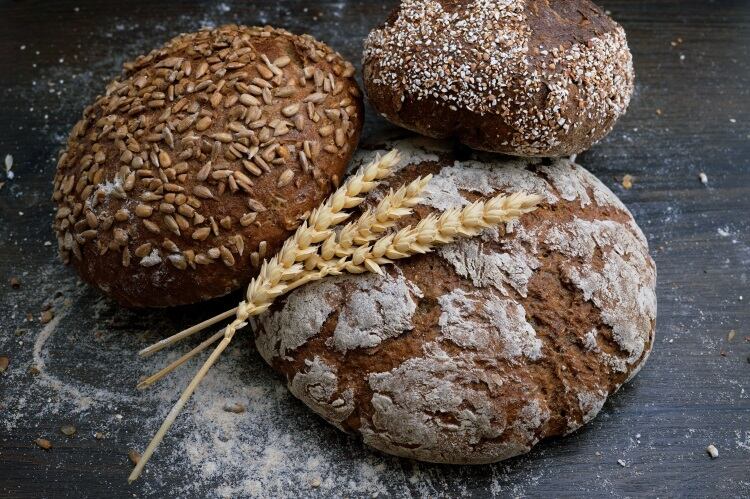
Today’s consumer has a range of demands.
They want ‘back to nature’ goods – made from natural ingredients and entirely without chemicals and additives – that also have a label indicating the provenance of the ingredients. They also want their treats to be aligned to the hugely popular ‘free from’ trends, that is, gluten-free, meat-free or sugar-free, among others.
If that’s not enough, they want baked goods that are protein-rich and low in carbs, and finally, that stay fresh for longer.
There is clearly a need for the bakery sector to be in a position to respond quickly to trends. But, how can they achieve those?
Having a state-of-the-art flexible production facility gives the baker the technical ability to achieve quick response times, but it is a far cry from the whole story. Other factors must be taken into consideration, like having a range of functional, clean label ingredients sourced and ready to take up the challenge.
The healthy step
Pregelatinized flours are produced from natural cereal grains, such as wheat, rye, spelt, oats, corn or rice that are subjected to hydrothermal processing, drying and milling.
This procedure triggers the binding and swelling process in the starch immediately, so it simply requires the addition of cold fluids to produce a thickening effect.
These flours improve dough stabilization and viscosity, and are useful for maintaining structure and texture as well as preventing fruit from sinking in products such as fruitcakes.
Pregelatinized flours and starches are available in flake form as well as powder form. The advantage of using them in flake form is that they bring good dispersion properties, which help to prevent clumping in the dough mixture.
One of the most important properties and advantages of choosing pregelatinized flours over standard flours is their ability to bind easily with additional quantities of water to create a finished product with a moist mouthfeel.
They also keep bread products fresher for longer. The result is not just happy consumers who get a moist, fresh product but better return on investment for all types of bakeries. This is particularly key at a time when bread deemed to no longer be fresh (a short time window) is simply thrown away.
According to the WWF, of the 4.5 million tons of baked goods produced in Germany every year, approximately 1.7 million tons is discarded.
Labeling can be a concern for ingredient-conscious consumers, too, but pregelatinized flours overcomes this.
The flours are classed as clean label and can simply be declared as ‘wheat/rye/spelt/oatflour.’ Another advantage is that pregelatinized flours are available also in gluten-free and organic varieties.
Pregelatinized flours are suitable for a large range of bakery applications, including fine bakery wares, bread and small baked goods, fine yeast-raised dough and choux paste.
Unsung hero of high protein bread
Vital wheat gluten is a lesser celebrated but no less important ingredient that brings a host of enhanced functional capabilities to bread production.
With the demand growing for high-protein breads, it is especially important for a good rise, shape and chewiness when low protein flours such as whole wheat or rye are used.
It is also good for texture control; stabilizes dough and gives it an elastic structure; is capable of increasing volume; aiding water absorption; and extends the bread’s shelf life.
The ingredient is made by hydrating wheat flour to activate the gluten then removing everything but the gluten. It can be produced using untreated spring water and with high quality wheat flour to achieve a protein that develops excellent visco-elastic properties when used with water.
When added to standard flours, it increases the gas keeping content, which then ‘pumps up’ the volume of the dough and improves the crumb structure of the finished bread.
As the amount of gluten protein in any flour – and subsequently, its dough – has a direct influence on the results and volume of the finished bake, it is paramount that bakers take into account both the flour quality and the outcome desired.
In most applications, a dose of 0.5% of vital wheat gluten added to the mixture will be sufficient to give improved functionality to the dough. However, in baked goods destined for deep freezing, a higher proportion is recommended (2% as a rule) to negate the weakening effects of the freezing process on the protein structures.
It is always an economic win when a single ingredient can bring a range of functional properties in one simple step.
However, due to the impact it can have upon the texture of the bake, it is wise to combine it with special wheat proteins – such as KRÖNER-STÄRKE’s Glusol – which possess no visco-elastic properties, make the workability of the dough easier and improve the taste of the baked product.
Vital wheat gluten can be used in a wide range of breads, small baked goods, frozen baked goods, fine bakery wares and baking pre-mixes.
As the labeling recommendation is simply ‘wheat gluten’ due to its natural production process devoid of chemicals, it ticks the clean-labelling box, too.
Welcome changes
Tapping into growing trends and making changes to trusted recipes with natural, chemical-free ingredients can offer bakers the boost to produce products that engage with a more discerning population.
Of course, diversifying into the health market or producing breads that stay fresher for longer could mean higher profits and a stronger market share.
A giant leap or small changes? Bakeries have the choice. Either way, finding an ingredients supplier capable of working to transparent, natural, clean-label, organic or standards is a step in the right direction.


